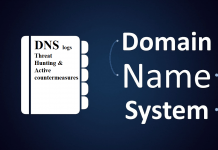How to Build a Cloud Computing Infrastructure on a Budget
Cloud computing revolutionizes the way businesses operate, offering scalability, flexibility, and cost-efficiency. However, many small and medium-sized enterprises (SMEs) assume that building a cloud infrastructure requires a massive budget. With strategic decisions, businesses can deploy an effective cloud setup without breaking the bank. Learn how to build a cloud computing infrastructure on a budget while ensuring performance, security, and reliability.
1. Assess Your Business Needs
Before investing in any cloud technology, it’s crucial to evaluate your business requirements. Not every company needs an enterprise-grade setup. Many can thrive with cost-effective business cloud solutions tailored to their specific needs.
Identify which applications and services require cloud hosting (e.g., email, storage, databases), assess performance requirements (CPU, memory, storage), and choose scalable solutions that grow with your business. By understanding your needs, you can avoid unnecessary expenses on excessive resources.
2. Choose the Right Cloud Service Model
Cloud computing offers different service models, each with its own cost structure. Infrastructure as a Service (IaaS) is best for businesses needing full control over their infrastructure, with budget-friendly options.
Platform as a Service (PaaS) suits developers who want to focus on coding without managing servers, with cost-effective choices. Software as a Service (SaaS) is ideal for companies looking for ready-to-use applications, with affordable picks like Google Workspace and Microsoft 365 (subscription-based). Selecting the right model ensures you only pay for what you use.
3. Leverage Open-Source and Free Tier Services
Cloud providers often offer free tiers with limited resources, reducing costs for startups and small projects. Open-source solutions like OpenStack (private cloud) and Nextcloud (file storage) provide cost-effective alternatives to proprietary services.
By utilizing these tools, businesses can deploy scalable cloud solutions without upfront licensing fees. Combining free-tier offerings with open-source platforms maximizes savings while maintaining functionality, making cloud adoption more accessible for budget-conscious organizations.
4. Optimize Cloud Storage and Bandwidth
Storage and bandwidth costs can add up quickly, but there are ways to keep them under control. Use cost-effective object storage solutions for infrequently accessed data.
Implement data compression and deduplication to reduce storage needs and bandwidth usage. Additionally, leverage affordable content delivery networks (CDNs) like Cloudflare and BunnyCDN to speed up data transfer without high costs.
5. Automate to Reduce Labor Costs
Manual cloud management can be time-consuming and expensive, so automation is key to cutting operational costs. Infrastructure as Code (IaC) tools automate deployment, reducing human error and labor costs.
Auto-scaling features from AWS Auto Scaling and Kubernetes ensure resources adjust based on demand, preventing overspending. Scheduled shutdowns of non-critical instances during off-hours can also lead to significant savings.

6. Implement Strong Security on a Budget
Strong security on a budget is achievable by leveraging free tools from cloud providers, such as firewalls, encryption, and DDoS protection, which safeguard remote servers and underlying infrastructure without extra costs.
Multi-factor authentication (MFA), like Google Authenticator, adds a no-cost security layer, restricting unauthorized access to operating systems and networking services. Automated backups, often included in cloud services, prevent data loss by storing copies on remote servers or across infrastructure components, ensuring business continuity.
Instead of investing in expensive physical infrastructure, organizations should optimize built-in security features—enabling encryption, role-based access controls, and monitoring cloud usage for anomalies. Most operating systems and networking services include configurable security settings, reducing reliance on costly third-party solutions. By maximizing these free or low-cost measures, businesses can protect their cloud environment effectively, even with limited computing power or budget constraints.
7. Monitor and Optimize Costs Continuously
Cloud costs can spiral if left unchecked, so continuous monitoring is essential. Use cloud cost management tools like AWS Cost Explorer, Google Cloud’s Cost Management, or open-source options like Prometheus.
Regularly review resource usage and downgrade underutilized instances (right-sizing). For long-term savings, consider reserved instances, which can offer discounts of up to 75% on AWS and Azure.
8. Use Hybrid or Multi-Cloud Strategies for Cost Flexibility
A hybrid or multi-cloud approach can help optimize costs by distributing workloads across different environments.
- Hybrid Cloud: Combine on-premises servers with public cloud services (e.g., AWS Outposts, Azure Stack) for workloads that need low latency or strict compliance. This reduces reliance on expensive cloud resources for all operations.
- Multi-Cloud: Distribute services across multiple providers (e.g., AWS for compute, Google Cloud for AI, Backblaze for storage) to take advantage of the best pricing and features from each.
- Spot Instances & Preemptible VMs: Use discounted, short-lived compute instances (AWS Spot Instances, Google Preemptible VMs) for fault-tolerant workloads like batch processing, reducing costs by up to 90%.
By diversifying your cloud strategy, you avoid vendor lock-in and capitalize on the most affordable options available.
9. Train Your Team for Cost-Efficient Cloud Management
Even the best cloud setup can become expensive if mismanaged. Investing in training ensures your team uses resources efficiently.
- Free Cloud Training: Providers like AWS (AWS Training & Certification), Google Cloud (Google Cloud Skills Boost), and Microsoft (Microsoft Learn) offer free courses on cost optimization.
- Certifications: Encourage team members to earn cloud cost management certifications (e.g., AWS Certified Cloud Practitioner, FinOps Certified Practitioner).
- Internal Best Practices: Document cost-saving policies (e.g., shutting down test environments after hours, enforcing tagging for resource tracking) to prevent waste.
A well-trained team can identify inefficiencies early, preventing budget overruns while maintaining performance.
Bottom Line
Building a cloud computing infrastructure on a budget is entirely possible with the right approach. By assessing your needs, choosing cost-effective business cloud solutions, leveraging free tiers, optimizing storage, automating processes, and continuously monitoring expenses, you can create a powerful cloud setup without overspending. Start small, scale smartly, and make data-driven decisions to maximize efficiency while minimizing costs.



































